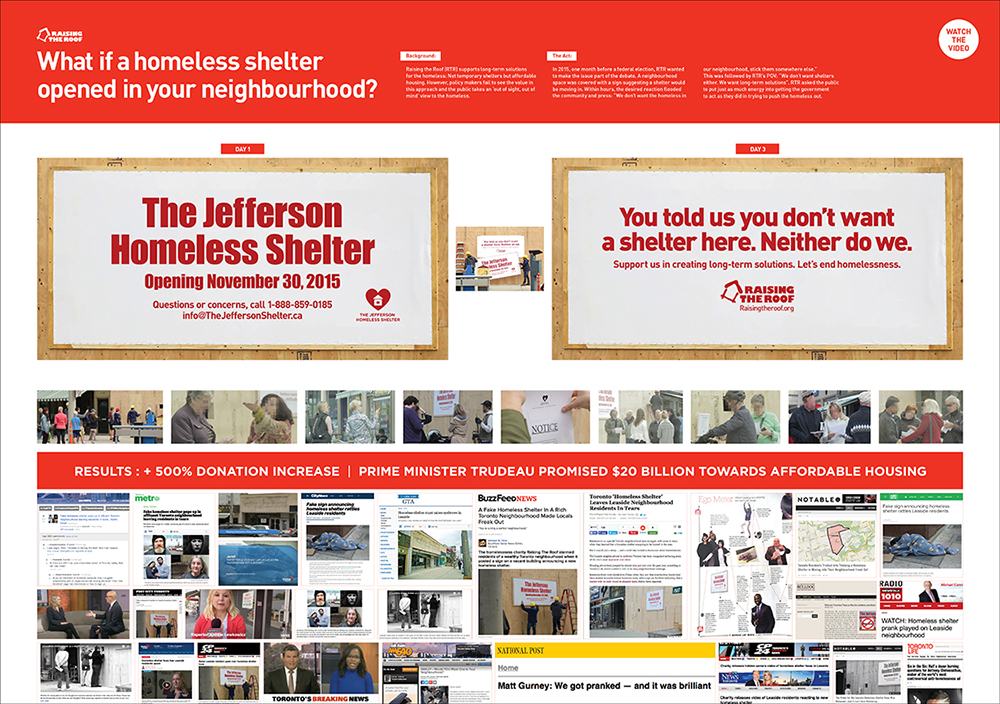In a constantly connected world, people are continually exposed to one charitable solicitation after another on TV, Twitter, Google's newsfeed, email alerts or Facebook posts. Charities have cleverly leveraged this new reality by saturating people with pleas to donate, make a Facebook picture pink, sign a petition and so on.
In this message-saturated world, Raising the Roof needed to create an effective and breakthrough campaign to generate awareness for long-term solutions to homelessness. With no marketing budget, the organization and agency Leo Burnett launched a single event to reveal that people's concern for the homeless is surprisingly selfish.
Raising the Roof provides national leadership on long-term solutions to homelessness in Canada. With a staggering 235,000 Canadians experiencing homelessness every single year* the organization has a huge task on its hands. The challenge was to communicate to the public that temporary solutions (such as emergency shelters) are not the answer to the problem. Instead, there should be a focus on long-term, permanent measures (such as changes to government policy) that put an end to homelessness for good.
When most people give their time and/or money to the homeless, they are freeing their own conscience from guilt and pity. Once they've made a contribution, they feel their job is done. This insight drove the campaign because the organization knew that in order to start a conversation about long-term homelessness solutions, it had to make the short-term solutions a personal problem.
Leo Burnett's idea was born out of NIMBYism - the notion of "Not In My BackYard." The agency knew a billboard, newspaper ad or run-of-the-mill PSA would not be enough to introduce a new conversation. In order for people to get real about long-term solutions, we decided to pit people's selfish tendencies against themselves with an experience.
The team found a property for lease in an affluent area of Toronto and covered it with a plywood façade. It featured a sign with "Homeless Shelter – Coming Soon!" and a phone number, email and URL to contact the shelter. It created an immediate uproar in the community. People picked up the phone and did all the talking. The message was clear – nobody wanted a shelter in their "backyard."
The next day, the agency revealed that Raising the Roof doesn't want a shelter either. It put up a sign that read: "You told us you don't want a shelter here. Neither do we. Support us in creating long-term solutions. Let's end homelessness." The team put all of it on film to prove how passionate people could get about homelessness as soon as the problem became personal.
The "hoax" caused a media frenzy that enabled Raising the Roof to break through by reaching every major Toronto news outlet and even other parts of the world. It had coverage on HuffingtonPost.ca, Buzzfeed.com, The Toronto Star, CP24, Independent.co.uk, and many more.
Raising the Roof donations increased 506% vs. the previous year. The result of the hoax was an estimated 7,700,000 potential unique impressions, with zero dollars invested in media, and 52,000 video views.
